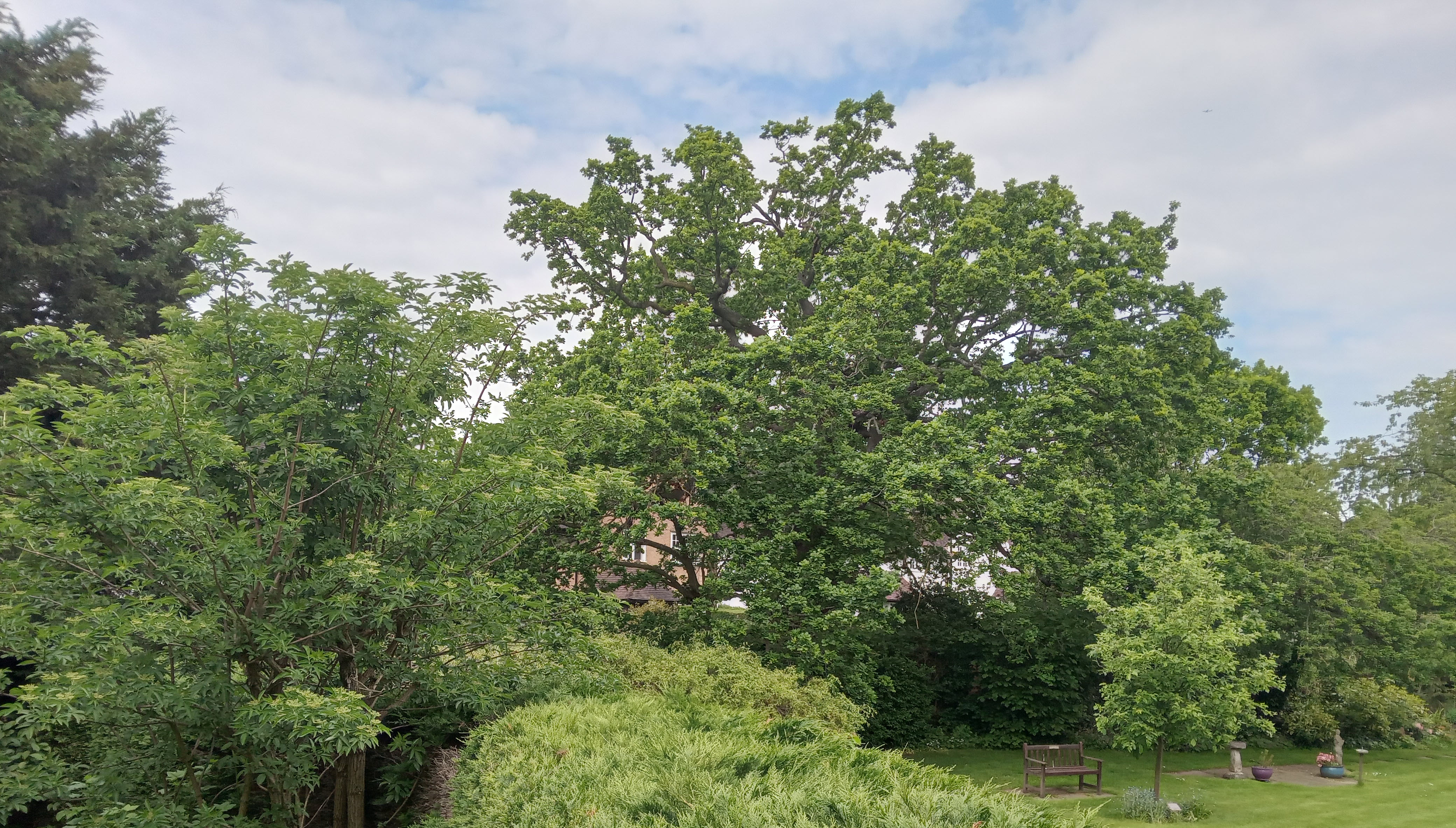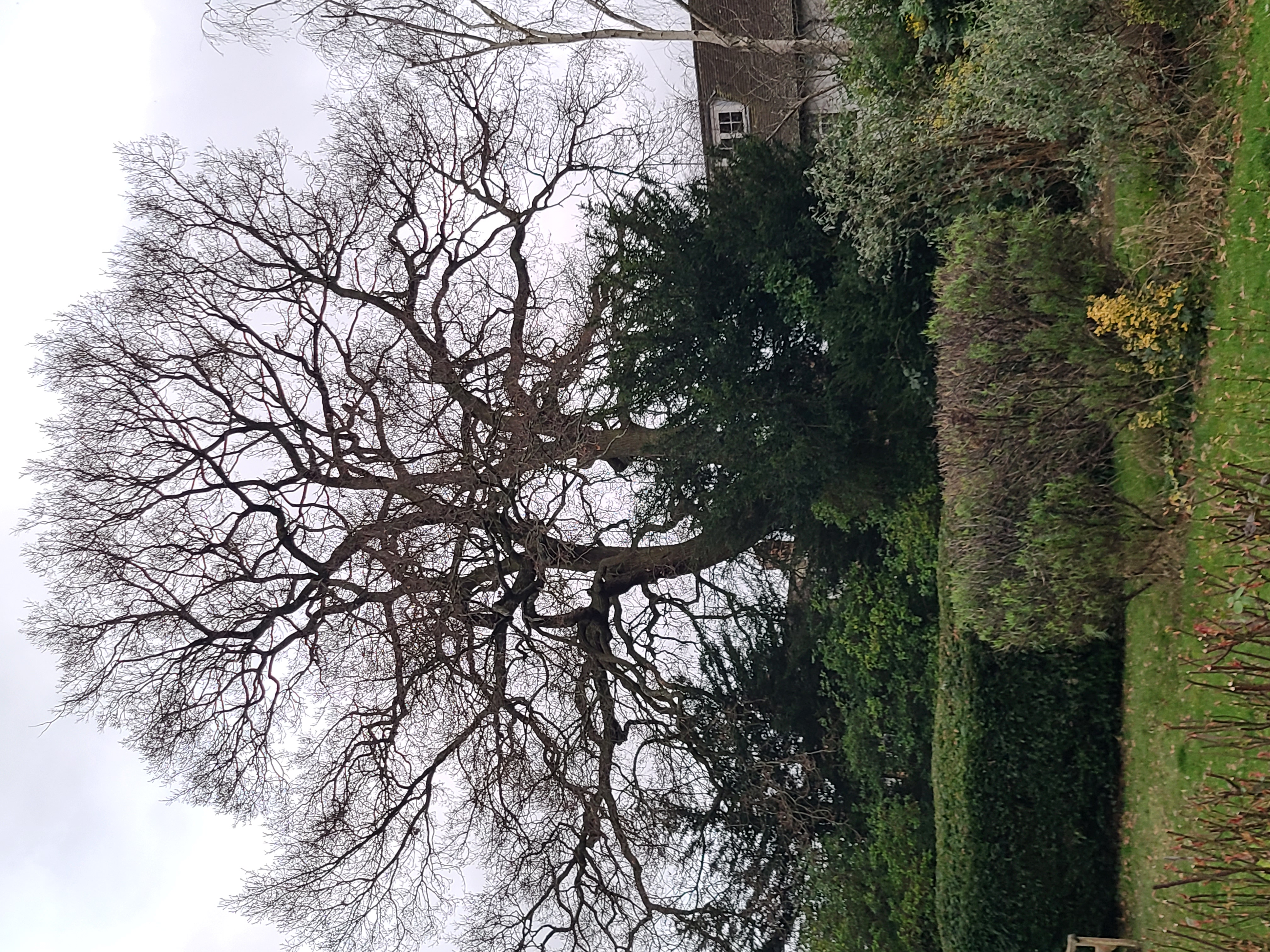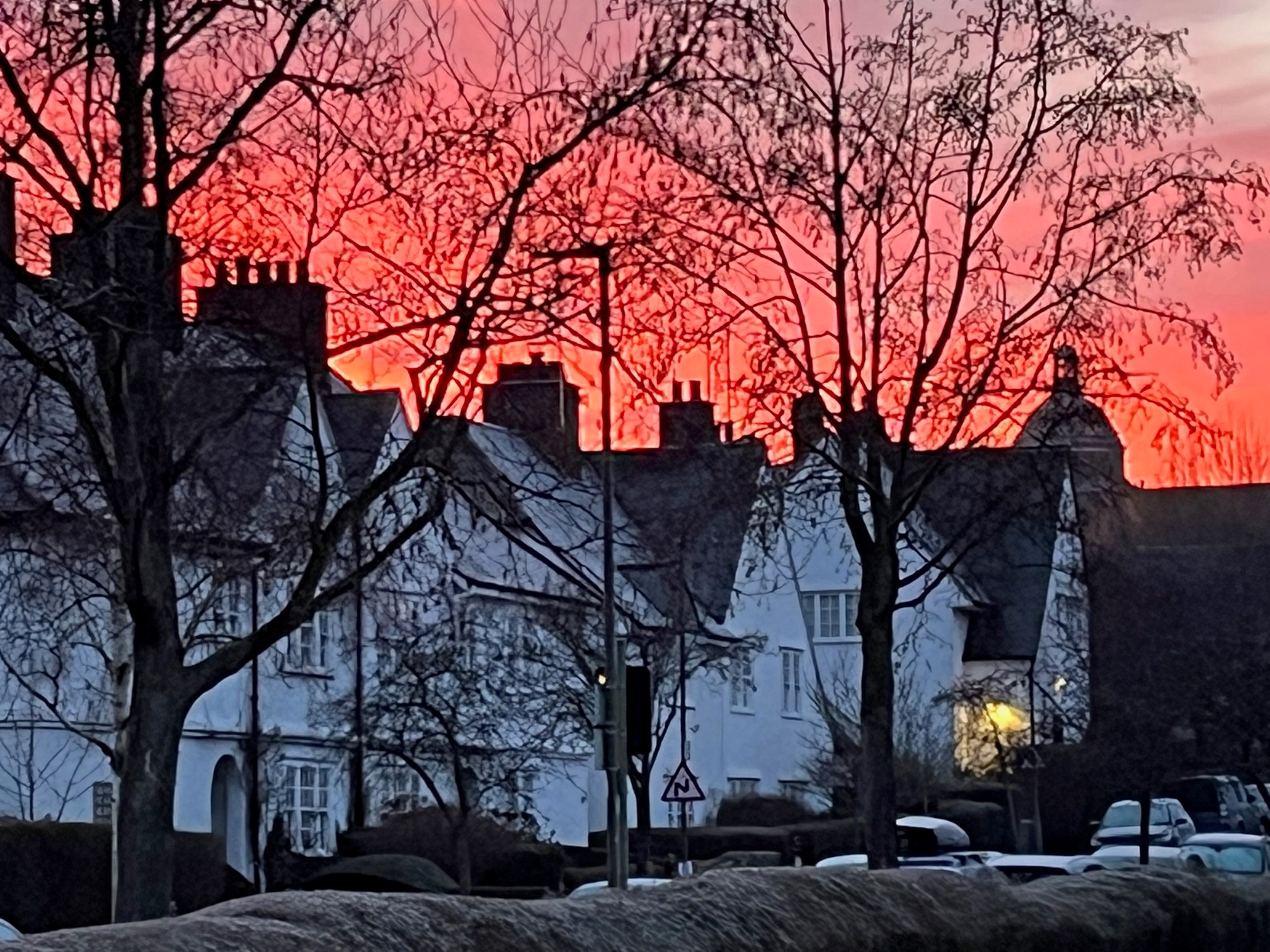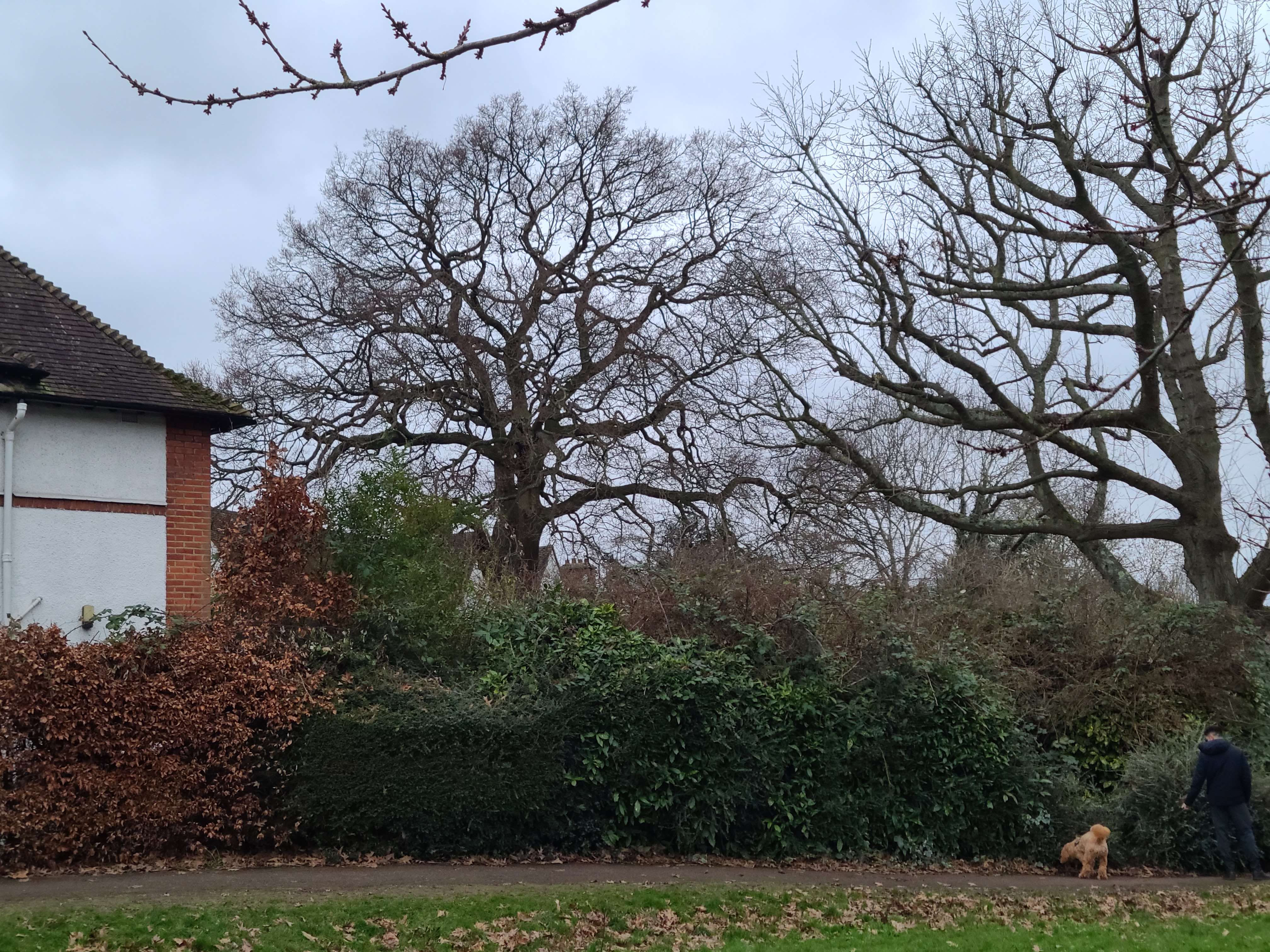Articles
Trees at Risk

Applications to Fell Important Mature Trees
(an unsustainable approach in our climate emergency)
There many false assumptions about the ability of new tree planting to replace existing canopy and ecosystem services. Planting new trees is essential for succession management but it takes decades, if not centuries, for them to achieve the unique social, environmental and progressive biodiversity value of veteran trees. Viewed narrowly just in terms of carbon storage, it can take 150(!) 12m high trees, or over 3000(!) 3m ones to match one mature 30m high tree. The Royal Horticultural Society is furthermore concerned that many of the planted tree saplings may never reach maturity.
We are fortunate to have many magnificent examples of mature trees, often predating the foundation of Hampstead Garden Suburb. We also have a responsibility to preserve this unique inheritance. A major role of TOS is to help ensure that our iconic tree stock is both protected and enhanced.
What is the Problem?
Barnet Council pledges to protect healthy trees from destructive tree work, and we also have the Hampstead Garden Suburb Trust looking after our landscape and important trees. Nevertheless, like many boroughs in London, we are facing continual threats from tree felling applications that are often disproportionate and based on paltry evidence.
Increasingly, even trees with Tree Protection Orders (TPOs) are under attack and our mature tree stock is stealthily being depleted. Insurance companies’ want to minimise their own costs and tree felling saves them money short-term, but often does not solve structural issues and may even cause new problems such as soil heave. It also disregards the true function and considerable public amenity value of our mature trees and largely ignores advanced ameliorating methods for suspected damage to property. Insurance companies are externalising real costs onto the community and our environment.
Seasonally moving cracks in old houses with inadequate foundations on clay soil are nothing new and were not always dealt with so drastically by insurers. But in the increasing climate emergency, North London seems to be ground zero for subsidence claims, and we urgently need to rethink our approach.
There are better solutions, but it can be stressful for householders, who may feel at the mercy of insurers’ demands, even when their damage reports are flawed. There is increasingly support, helping homeowners to understand the issues in a more balanced way. The aim is to clarify the technical aspects from a risk reduction perspective and to look at sensible alternative options such as state-of-the-art root barriers, targeted pruning and underpinning. Tree damage claims may also be easily countered by independent specialists such as structural engineers, who can take issue with the insurers’ reports.
Our natural environment is an essential safeguard against climate disasters. Barnet’s 2023 Tree Policy recognises the positive impact of urban trees on the environment and people and aims to protect its current trees and woodlands. The tree policy clearly outlines the myriad benefits and value of our local tree population, in terms of air quality, carbon storage, urban heat island and traffic noise reduction, natural flood defences, biodiversity, visual amenity enhancing property values, human health and wellbeing benefits.
“Blaming a tree for the inadequacy of a building’s foundations is a short sighted, economically driven approach that denudes the environment and risks harm to human health (not to mention wildlife).”
Quote by Russell Miller, Arboricultural Consultant, of the Ancient Tree Forum and Tree Musketeers
 How to Help Save Our Important Trees
How to Help Save Our Important Trees
The Tree & Open Spaces group monitors tree work applications and objects to unreasonable tree destruction demands, on the basis of sound advice and evidence.
Trees are easy targets and we need to show how much we value them. Do make use of your right as a local resident to submit objections to mature tree felling requests, especially where tree roots are only an incidental cause of subsidence issues. Demand alternative solutions and that other causes such as inadequate foundations and faulty drainage issues are considered as a first, rather than a last, resort. Ask for independent structural analyses which can often undermine the foundations of insurance company claims (pun intended). The London Tree Officers Association established the CAVAT Group to manage trees as public assets rather than liabilities. Remind the Council that they need to take into account the public amenity benefit of mature trees and therefore any felling approval should be subject to the insurer paying the Council, or a separate environmental fund, the CAVAT value of the tree. If the tree is older than the structure concerned, they also need to give a 10/20-year indemnity to all the surrounding buildings against the possibility of heave.
Insurance companies have been relatively unchallenged so far, but they are not immune to public pressure if enough people question the validity of their many felling demands. This should help persuade insurance companies to look to more sustainable solutions. Modern root barriers, for example, are relatively cheap and effective in reducing the amount of water taken up by trees - where this is an issue.
Tree work planning applications are listed on Barnet’s planning application link, where public objections can be made. There is also their Guide on How to Comment on Treework Applications
 Please do get in touch if you want to support our tree saving campaigns, or are concerned about a particular tree: Trees@hgsra.uk
Please do get in touch if you want to support our tree saving campaigns, or are concerned about a particular tree: Trees@hgsra.uk
Spread the word and ask your local MP and councillors for support.
The HGS Trust exists to protect both our built and our natural environment. All tree works on private land in the Suburb need to be approved by the Trust. They can offer support and will take a reasonable approach to tree felling requests.
Check out the significant trees in your street in the HGS Tree Survey
Where to Find out More
It is easy to feel isolated, but there is now a groundswell of opposition to the needless destruction of our mature tree stock across the country.
Important mature trees can receive additional protection from Tree Protection Orders (TPOs). If you feel that a particular tree should have a TPO applied to it, get in touch: Trees@hgsra.uk and check out the government’s guide to Tree Protection Orders and trees in conservation areas. Both the Woodland Trust and The Friends of the Earth have posted practical guides to protecting trees, woodlands and hedgerows.
If you need subsidence and tree protection information see also SHIFT (Stop Home Insurers Felling Trees).
Canopy (National Tree Coalition) is a brand-new initiative, bringing together resident groups fighting tree destruction across the country.
Unfortunately, the law protecting trees is ambiguous and woefully inadequate. Roots only need to be present, rather than causal, for trees to become the targets of felling demands. The Woodland Trust has information on the All-Party Parliamentary Group for Woods and Trees, an important ongoing initiative to bring about stronger protection for our important local trees.
Insurers have recently started making debatable comparisons between the carbon cost of felling mature trees versus remedial construction emissions, which are being challenged by tree specialists such as Tree Law.
It is not just subsidence blame that threatens our veteran trees. Inappropriate defect-led tree assessments can also lead to unnecessary felling. In this webinar ‘Why do we lose so many Trees? Is decay detection in trees being discredited by poorly executed tests and poorly interpreted results?', the Arboricultural Association discusses how bad law, poor risk management and weak arboriculture cause premature tree loss.

